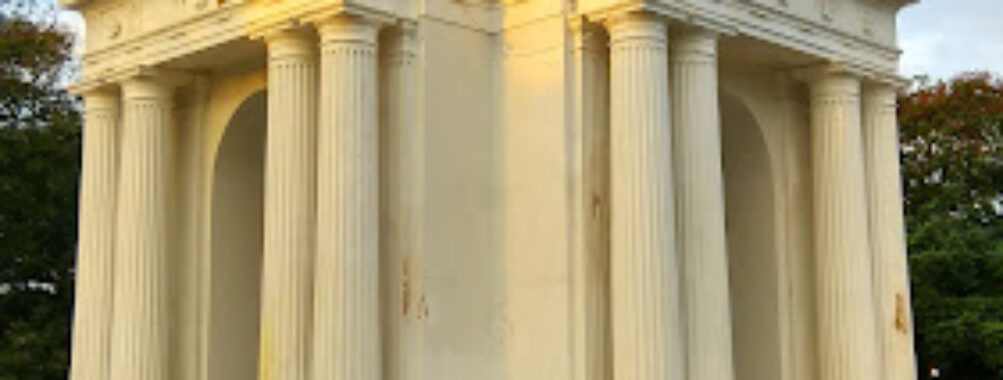
Aayi Mandapam
Table of Contents
Description
Aayi Mandapam in Puducherry, India, stands proudly at the center of Bharathi Park, surrounded by greenery and historic streets of White Town. Built in 1854 during the French colonial era, this striking white monument carries both architectural elegance and a fascinating backstory. It was commissioned under the reign of Napoleon III of France to commemorate the construction of a water reservoir that brought fresh water to the city. On the surface it looks like an elegant Roman-inspired pavilion, but once you dig into the history, you’ll find a story that mixes practicality, colonial ambitions, and local culture.
The name itself comes from Aayi, a devout woman from the 16th century, whose humble sacrifice inspired the French rulers to immortalize her name through this stone structure. Locals often share the tale, hinting at how Aayi demolished her own house — reputedly once a courtesan’s home — to allow a freshwater tank to be constructed, making her story one of service and legacy rather than typical grandeur. That uncommon dedication turned into a remembered narrative woven into this white monument’s identity. Honestly, there’s something moving about it; instead of a monument to power or wealth, it’s a monument to water and practicality. How often does one see that?
Architecturally, Aayi Mandapam reflects neoclassical influences, with clean lines, towering white pillars, and a symmetrical design that feels very Roman in inspiration. And unlike many colonial buildings, this one doesn’t overwhelm with size — instead, it invites you to pause and appreciate its quiet beauty against the lush green lawns of Bharathi Park. Even visitors who aren’t too deep into history often find themselves enjoying the serene ambience. Some describe it as an ideal stroll-stop, while others may find it fairly plain compared to more ornate structures in Puducherry. That’s fair too: it really depends on your expectations. If you’re coming for flashy architecture or bustling activity, you might walk on after a five-minute photo. But if you’re here to soak in heritage, the calm, and the setting, it leaves a surprisingly strong impression.
Where Aayi Mandapam truly shines is its placement: the monument sits at the heart of Bharathi Park, which is itself surrounded by many of White Town’s landmarks — from government buildings with French colonial architecture to museums and the famous Promenade Beach just a short walk away. So, it often becomes less of a standalone attraction and more of an experience woven into exploring the center of Puducherry’s history. Families often stop here for photos, children run about on the paths, and the open lawns breathe life into the neighborhood. On a personal note, the first time I visited I was struck not by the structure alone but by how inviting the entire area felt — shaded benches, kids playing badminton in the park, a cool breeze sneaking in from the sea. All of it made that white stone pavilion more than just a historic memory; it became part of the town’s everyday life.
Overall, Aayi Mandapam blends function, symbolism, and heritage. It’s a place celebrated by many for its historical significance and clean neoclassical design, yet others see it simply as a quiet stop in a leafy park. Both perspectives are valid, and maybe that’s the beauty of it: the monument isn’t trying too hard to impress, which makes it feel genuine and enduring. Whether a traveler is fascinated by French colonial architecture, eager to piece together Puducherry’s layered history, or just searching for a peaceful landmark amid the town, Aayi Mandapam offers a small but meaningful glimpse into the city’s character.
Location
Places to Stay Near Aayi Mandapam
Find and Book a Tour
Explore More Travel Guides
No reviews found! Be the first to review!